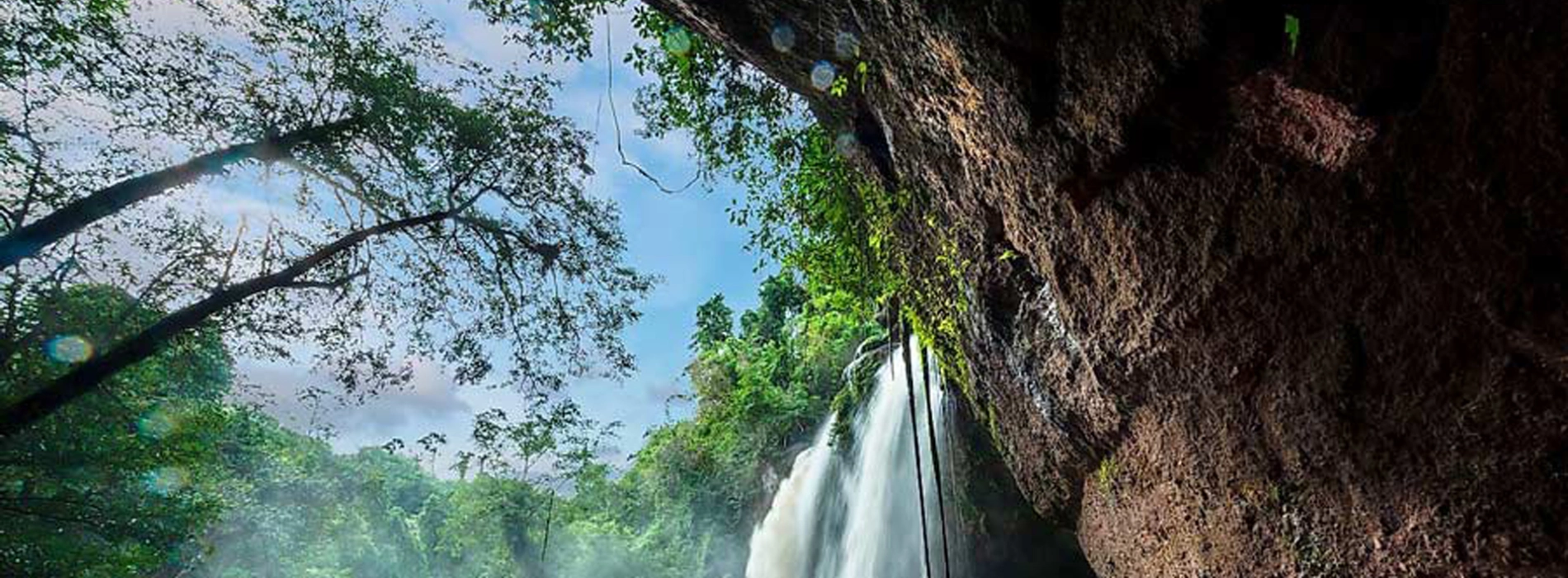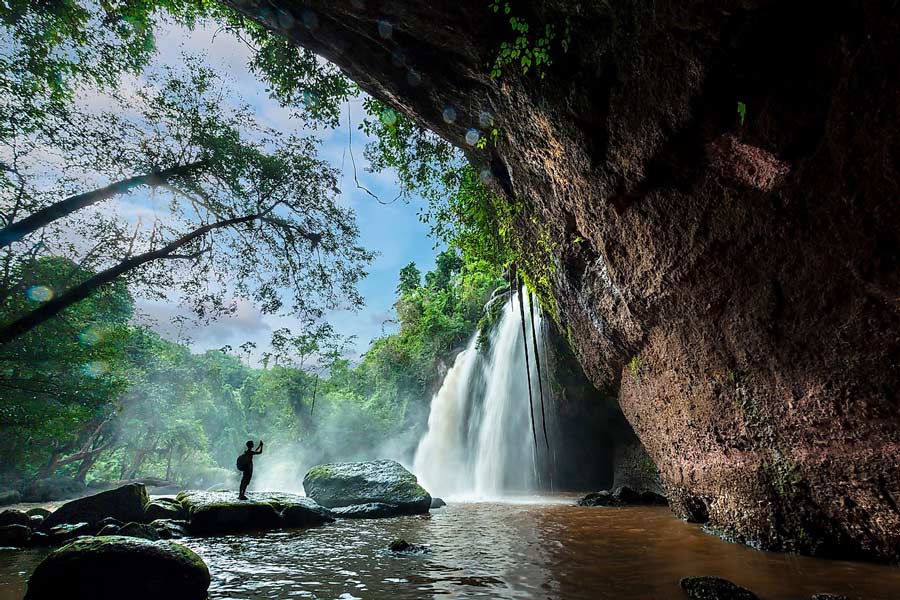Nakhon Nayok

Nakhon Nayok, nestled approximately 100 kilometers northeast of Bangkok in central Thailand, is a province that captivates visitors with its enchanting natural beauty. Khao Yai National Park, a UNESCO World Heritage Site, sprawls across parts of the province, offering a sanctuary of diverse flora and fauna amidst lush landscapes.
 Nakhon Nayok Province
Nakhon Nayok Province
The region is adorned with breathtaking waterfalls, including the renowned Sarika and Nang Rong Waterfalls, where cascading waters create a serene and picturesque ambiance. Nakhon Nayok's fertile lands are dedicated to agriculture, particularly fruit orchards yielding durian, mangosteen, and rambutan. Adventure seekers find solace in the province's outdoor offerings, from trekking and camping to the exhilaration of white-water rafting. Beyond its natural allure, Nakhon Nayok holds pockets of history and culture, with temples and local markets providing glimpses into the region's rich heritage. Accessible from Bangkok, Nakhon Nayok stands as a delightful haven, beckoning travelers to explore its diverse landscapes and embrace the tranquility it generously offers.
Nakhon Nayok, a province nestled in the heart of Thailand, unfolds a captivating narrative deeply rooted in the country's rich historical legacy. With origins dating back to ancient civilizations, the region's early history likely saw the presence of indigenous communities engaged in agricultural practices along the fertile riverbanks. As the Sukhothai and Ayutthaya Kingdoms rose to prominence, their influence shaped the cultural and economic landscape of what is now Nakhon Nayok. The Burmese-Siamese Wars of the 18th century brought turmoil, with Ayutthaya succumbing to Burmese invasions. In the aftermath, General Taksin emerged, establishing the Thonburi Kingdom, a precursor to the Rattanakosin Kingdom with its capital in Bangkok.
 Tranquil landscape of Nakhon Nayok
Tranquil landscape of Nakhon Nayok
During the 19th century, Nakhon Nayok, like the broader Siamese Kingdom, experienced the winds of modernization under the reign of Siamese kings. In 1943, marking a pivotal point in its administrative history, Nakhon Nayok gained provincial status during the reign of King Rama VIII. The mid-20th century saw the province evolve as an agricultural hub, with its fertile lands supporting the cultivation of various fruits, notably durian, mangosteen, and rambutan.
In contemporary times, Nakhon Nayok has embraced its historical roots while forging ahead as a destination that beckons nature enthusiasts and adventure seekers. The establishment of Khao Yai National Park, a UNESCO World Heritage Site, has elevated the province's allure, offering pristine landscapes, waterfalls, and diverse flora and fauna. The city of Nakhon Nayok, serving as the provincial capital, stands as a testament to the confluence of tradition and modernity, offering glimpses into the local way of life.
 Sarika Waterfall in Nakhon Nayok
Sarika Waterfall in Nakhon Nayok
Thus, Nakhon Nayok stands as a living testament to Thailand's intricate historical tapestry. Its journey through time reflects not only the resilience of its people but also the enduring charm of a region that seamlessly blends its ancient past with a dynamic present, inviting exploration and appreciation for its multifaceted identity.
You may also like: Things you need to know about Pad Thai
The best time to visit Nakhon Nayok, like much of Thailand, is during the cool and dry season, which typically spans from November to February. During these months, the weather is more comfortable with lower humidity levels and cooler temperatures, making outdoor activities more enjoyable. This period is considered the peak tourist season due to the pleasant weather.
 Khao Yai National Park
Khao Yai National Park
1. November to February (Cool and Dry Season):
- Temperatures are cooler, ranging from 20°C to 30°C (68°F to 86°F).
- This is the ideal time for outdoor activities such as hiking, trekking, and exploring the natural attractions in and around Nakhon Nayok, including Khao Yai National Park.
2. March to May (Hot Season):
- The hot season follows the cool season, with temperatures rising significantly.
- Daytime temperatures can reach 35°C (95°F) or higher.
- While outdoor activities are still possible, it's essential to stay hydrated and take precautions against the heat.
Traveling to Nakhon Nayok is a seamless journey, especially given its close proximity to Bangkok. The approximately 100-kilometer drive from the capital takes around 1.5 to 2 hours, making a car journey an efficient and convenient option. Alternatively, buses departing from Bangkok's Northern Bus Terminal (Mo Chit) provide a cost-effective means of transportation, with a travel time of 2 to 2.5 hours. Minivans from Victory Monument offer a quicker alternative, taking approximately 1.5 to 2 hours. For those seeking a more personalized experience, taxis or private transfers are available. Additionally, adventurous travelers may consider motorbiking or bicycling, allowing for a more immersive journey. While Nakhon Nayok lacks direct train services, train enthusiasts can embark on a rail journey to nearby cities like Saraburi and then continue their trip by bus or taxi. The diverse transportation options cater to various preferences and budgets, ensuring accessibility to the province's natural wonders and cultural attractions.
You may also like: Top 5 Most Popular Thailand Festivals